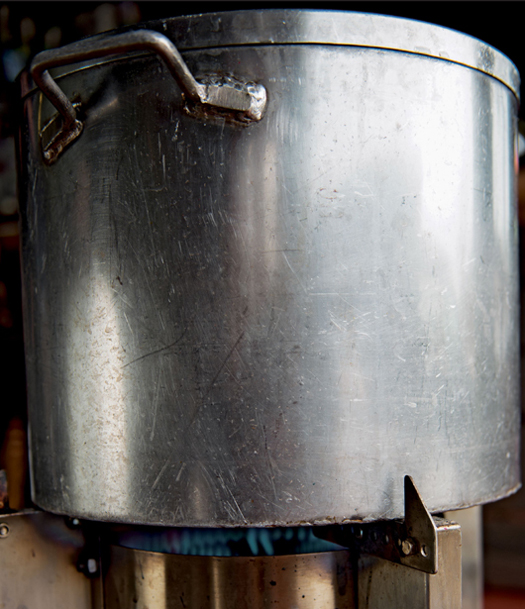STERLING EPICURE and the distinctive Sterling Epicure logo are registered trademarks of Sterling Publishing Co., Inc.
Photography 2014, 2018 Sterling Publishing Co., Inc.
All rights reserved. No part of this publication may be reproduced, stored in a retrieval system, or transmitted in any form or by any means (including electronic, mechanical, photocopying, recording, or otherwise) without prior written permission from the publisher.
For information about custom editions, special sales, and premium and corporate purchases, please contact Sterling Special Sales at 800-805-5489 or .
INTRODUCTION
Its hard to believe that so much could change in homebrewing in the four years since I wrote the first edition of this book. New styles such as the New England IPA have emerged, new hop varieties have exploded in popularity, and new advances in sour-beer production have changed the landscape. Im pleased to address these new advances in ingredients and techniques in this revised and expanded edition.
Most homebrewers start out the same way: They begin with a simple malt-extract kit, progress to steeping crushed specialty grains, and eventually try partial mashing combined with extract. These methods can result in perfectly fine beer, and many brewers short on time or space may never go any furtherwhich makes sense, in a way. If you can make a great beer through extract-based brewing, why make the jump to all-grain?
Welcome to all-grain brewing, a method of beer making that puts you in complete control of the creative process.
Well, extract-based brewing is a bit like making macaroni and cheese from a boxed mix: You can play around with the recipe, add plenty of butter and fresh cheese, and end up with a delicious dish that nobody would guess came from a box. But eventually youll start to feel that your creativity is being stifled by that premixed powder. Youll wonder, What if I could choose whatever ingredients I want and cook them whatever way I want? In short, youll eventually want total control over your finished product.
Welcome to all-grain brewing, a method of beer making that puts you in complete control of the creative process. From the selection of grain and mash temperature to the mineral content of the water youre using (as well as many other variables), youre in charge when you do an all-grain brew. If you make beer using malt extracts, you leave these and other decisions to the extract manufacturers. But if you brew with grain, you have the capability of making a beer thats yours from step one.
This book shows you how to do that, starting with a look at brewing equipment and the steps youll go through on brew day. The chapters that follow explore the many options youll have as a brewer. Well tackle malts and different ways to mash. (For most all-grain brewers, malts are just as exciting as hops.) Well go in-depth on the topic of hops as well, with a look at how you can get the most from them. Well also explore yeast varieties and the important practices surrounding them.
Sprinkled throughout the book are recipes for a variety of homebrews, including funky, sour, and wood-aged beers, which often are the hardest to find and the most expensive to buy. Ill walk you step by step through the brewing of each.
Finally, well look at a variety of nontraditional ingredients: fruits such as apricots, peaches, and cherries, as well as herbs and spices that can make your brews truly unique. Lovers of chocolate stouts, pumpkin beers, herb-infused pale ales, and anyone who brews off the beaten path will find much to savor.
Homebrew Beyond the Basics is geared toward the reader who has some knowledge of the beer-making process. It thoroughly explains key methods while touching lightly on more basic information. Truly basic info is easy to find elsewhereonline, for instance, or from other homebrewers.
This book is designed for and dedicated to brewers who want to make beer thats as good as or better than commercial beer. Theres no real obstacle to that goal other than attention to detail and experience. If you follow the instructions in this book, theres no reason why you cant brew world-class beers.
ABOUT THIS BOOK
If you didnt just read the introduction, let me be clear: This book assumes that you have some brewing knowledge. It also makes some other assumptions:
 You have basic brewing equipment and know how to use it. Its okay if you dontmaybe youve brewed only with friends. But the equipment chapter is devoted to all-grain pieces only. If you need any information on basic pieces (buckets, airlocks, etc.), you can find it easily at your local homebrew shop or online.
You have basic brewing equipment and know how to use it. Its okay if you dontmaybe youve brewed only with friends. But the equipment chapter is devoted to all-grain pieces only. If you need any information on basic pieces (buckets, airlocks, etc.), you can find it easily at your local homebrew shop or online.
 All the information conveyed applies to the standard homebrew batch size, 5 gallons. Chances are that will work for you, but keep it in mind as you translate things to your own system if you brew smaller or larger batches.
All the information conveyed applies to the standard homebrew batch size, 5 gallons. Chances are that will work for you, but keep it in mind as you translate things to your own system if you brew smaller or larger batches.
 The recipes in this book go hand-in-hand with the chapters theyre in by putting the information you just read into practice. Sometimes that will mean trying out a technique, such as kettle souring. Other times, a recipe will feature an ingredient, such as home-toasted malt. Once in a while, a recipe will just give you a platform to do your own thing (such as the Blonde Ale on designed as a base beer for fruit or herbs.)
The recipes in this book go hand-in-hand with the chapters theyre in by putting the information you just read into practice. Sometimes that will mean trying out a technique, such as kettle souring. Other times, a recipe will feature an ingredient, such as home-toasted malt. Once in a while, a recipe will just give you a platform to do your own thing (such as the Blonde Ale on designed as a base beer for fruit or herbs.)
 Speaking of the recipes, I did my best to make them easy to understand and easy to modify. My efficiency is typically between 70 and 75 percent, and all original gravity ranges operate under that assumption. But if you plug it into your own calculator and get a far different gravity or if youre brewing a different batch size, just use the grain percentages. The same goes for hopsI used alpha acid units () rather than ounces to make things easy to customize based on crop variations or hop substitutions.
Speaking of the recipes, I did my best to make them easy to understand and easy to modify. My efficiency is typically between 70 and 75 percent, and all original gravity ranges operate under that assumption. But if you plug it into your own calculator and get a far different gravity or if youre brewing a different batch size, just use the grain percentages. The same goes for hopsI used alpha acid units () rather than ounces to make things easy to customize based on crop variations or hop substitutions.


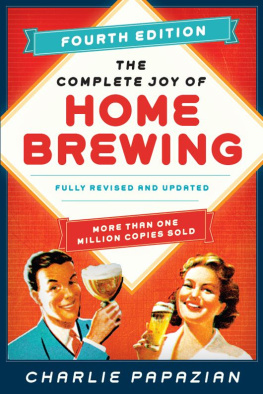


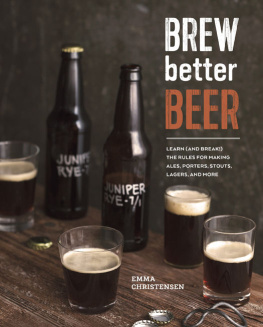

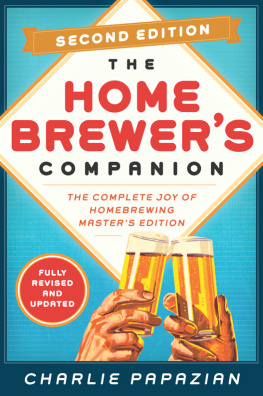
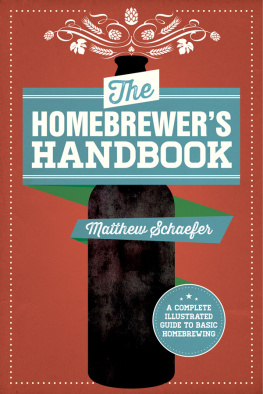


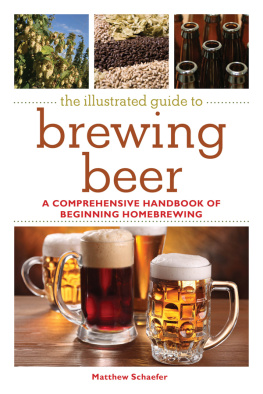

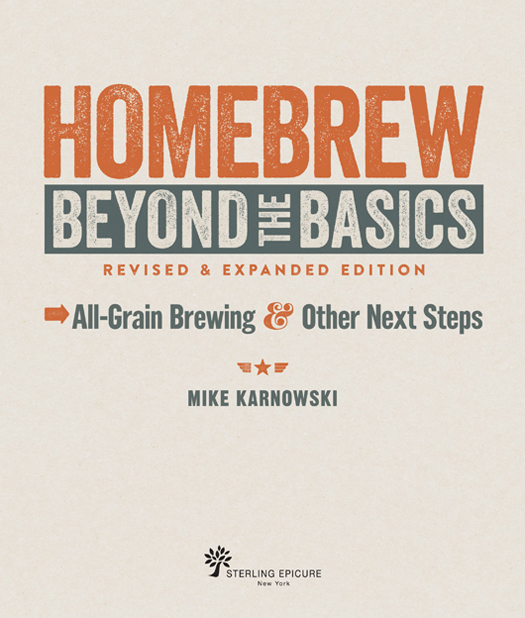

 You have basic brewing equipment and know how to use it. Its okay if you dontmaybe youve brewed only with friends. But the equipment chapter is devoted to all-grain pieces only. If you need any information on basic pieces (buckets, airlocks, etc.), you can find it easily at your local homebrew shop or online.
You have basic brewing equipment and know how to use it. Its okay if you dontmaybe youve brewed only with friends. But the equipment chapter is devoted to all-grain pieces only. If you need any information on basic pieces (buckets, airlocks, etc.), you can find it easily at your local homebrew shop or online.